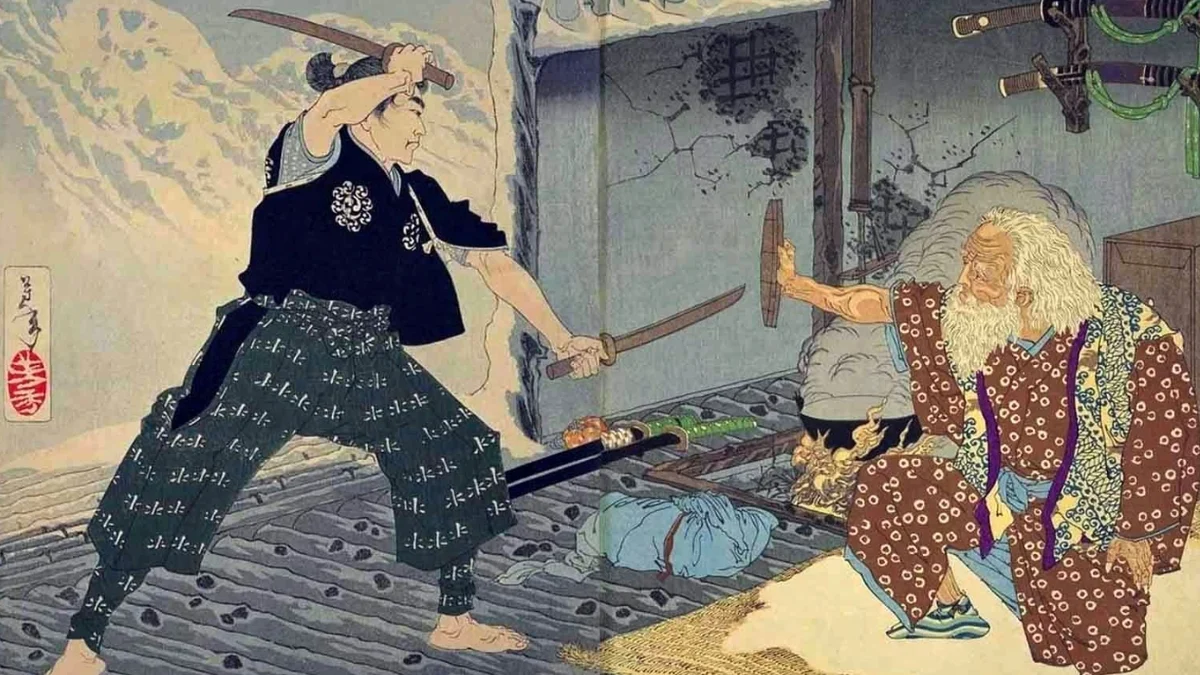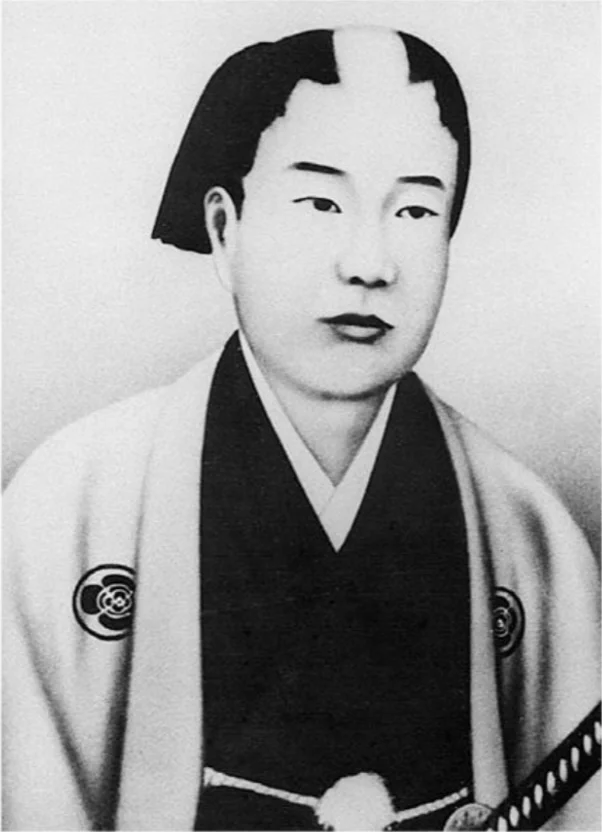
Japan’s history is full of incredible warriors – from brilliant battlefield commanders to legendary duelists and the founders of martial arts schools – whose skills and ideas still impact how we think about combat and strategy today. This list highlights famous leaders, master swordsmen, and powerful figures from the late Edo period, all of whom led armies, developed unique fighting styles, and left behind writings and training methods that continue to shape our understanding of the warrior code, bushido, and the art of the sword.
15. Okita Sōji

Okita Sōji, the captain of the Shinsengumi’s First Unit, was a remarkably talented swordsman trained in the Tennen Rishin-ryū style, which emphasized quickness and accurate stabbing attacks. He began training as a child and quickly became a teacher himself. While stationed in Kyoto during a turbulent period in Japanese history, he participated in important missions, but his service was limited by a long-term illness.
14. Hijikata Toshizō

Hijikata Toshizō, the second-in-command of the Shinsengumi, created and maintained a rigorous set of rules that turned the group into a highly effective police force in Kyoto. After the shogunate fell, he continued to lead his troops through the Boshin War, fighting until he died near Hakodate in 1869.
13. Hattori Hanzō

Hattori Hanzō, originally from Iga, was a key military leader serving the Tokugawa clan during the late Sengoku period. He was famous for leading scouts and specialized troops, and he notably helped Tokugawa Ieyasu escape safely after the Honnō-ji Incident in 1582. Later, in Edo (modern-day Tokyo), Hanzō was in charge of security, becoming so well-known that one of the castle’s main gates was named after him – Hanzōmon.
12. Itō Ittōsai

Itō Ittōsai, the creator of Ittō-ryū, simplified swordsmanship into a straightforward approach focused on a single, powerful strike. His ideas had a lasting impact, shaping later sword schools and even the basics of modern kendō, particularly through the Ono-ha Ittō-ryū lineage. Stories tell of his rigorous training and many duels, which helped him perfect his unique fighting style.
11. Tsukahara Bokuden

Tsukahara Bokuden, a sword master from Japan’s Sengoku period, created the Kashima Shintō-ryū style of swordsmanship, focusing on practical effectiveness in battle. He was famous for winning fights without even drawing his sword, demonstrating the importance of strategy and self-control. His teachings were then passed down and practiced in various parts of the country.
10. Yagyū Munenori

Yagyū Munenori, a master swordsman and teacher to the first Tokugawa shoguns, believed that the skills used in fighting could also be applied to ruling a country. His book, ‘Heihō Kadenshō,’ explores how understanding timing, awareness, and motivation are crucial for success in both battle and government. Thanks to his influence, swordsmanship became an important part of the education and traditions of the shogunate and its leaders.
9. Honda Tadakatsu

I’m a huge fan of Honda Tadakatsu! He was one of the top commanders for the Tokugawa clan and fought in all the big battles when Japan was being unified. You can always spot him in pictures with his awesome helmet that has antlers! And get this – he carried a spear called Tonbogiri, which is considered one of the three most famous spears in all of Japan. From what people wrote at the time, he was always right there in the thick of the fighting and you could *always* count on him to do his job.
8. Date Masamune

The lord of Sendai skillfully managed military campaigns while also focusing on developing his territory and building relationships with others. He famously sponsored an embassy led by Hasekura Tsunenaga, which made contact with New Spain and Europe. Masamune also invested in growing towns, encouraging local trade, and supporting cultural initiatives – all of which helped to solidify his power and influence.
7. Sanada Yukimura

Sanada Nobushige was known for his quick movements and strong defenses during the final battles fought by the Toyotomi clan. During the Osaka Winter Campaign, his fortifications – particularly the Sanada-maru – successfully held off numerous attacks. He skillfully led small groups in raids and counterattacks, focusing on precise timing and using the landscape to his advantage.
6. Takeda Shingen

Takeda Shingen, a powerful lord from the Kai province, was known for his highly mobile armies and innovative battle strategies, especially in mountainous areas. His famous battles against Uesugi Kenshin at Kawanakajima are still analyzed today for clever tactics and efficient supply lines. Shingen also implemented strict administrative rules, like the Kōshū Hatto, to maintain order and effectively govern his territory.
5. Uesugi Kenshin

Uesugi Kenshin, the lord of Echigo, was known for his quick and effective military campaigns. He kept his troops well-supplied even in difficult terrain. For years, he fought against the Takeda clan, challenging their strategies and testing their leadership. Kenshin’s strong governance and financial management kept his territory stable, allowing him to consistently raise and deploy armies.
4. Sasaki Kojirō

Sasaki Kojirō was a famous swordsman and the creator of the Ganryū school of swordsmanship. He was known for his incredibly long sword, called “Monohoshi Zao,” and his fighting style focused on keeping opponents at a distance, perfect timing, and practicing precise cuts. His 1612 duel with Miyamoto Musashi on Ganryūjima Island is one of the most well-known and thoroughly recorded sword fights in samurai history.
3. Oda Nobunaga

Oda Nobunaga was a key figure in unifying Japan during the Sengoku period. He modernized his army by emphasizing speed, using firearms effectively, and improving supply lines. He also implemented reforms like ‘rakuichi-rakuza’ to encourage open trade and break up powerful merchant guilds. The Battle of Nagashino showcased his army’s skill with arquebuses (early firearms) and changed how battles were fought throughout the region.
2. Tokugawa Ieyasu

Tokugawa Ieyasu, the first shogun of the Tokugawa shogunate, built a strong and stable government through skillful alliances, successful military campaigns, and a well-organized administrative system. Following his victory at the Battle of Sekigahara, he implemented policies like requiring lords to spend time both in Edo and their own domains, and established systems to oversee them. These actions ushered in a long era of peace and formalized the training of warriors within a structured, bureaucratic framework.
1. Miyamoto Musashi

Miyamoto Musashi was a legendary swordsman renowned for winning over sixty duels without defeat. He invented a unique fighting style called Niten Ichi-ryū, which used two swords. His famous book, ‘The Book of Five Rings,’ details his strategies focusing on timing, spacing, and being flexible in combat. Musashi also taught others and wrote about his techniques, ensuring his methods continued through his school for generations.
Share who you would add—or move higher or lower—in the comments!
Read More
- Bitcoin’s Ballet: Will the Bull Pirouette or Stumble? 💃🐂
- XRP’s Soul in Turmoil: A Frolic Through Doom & Gloom 😏📉
- ‘Jujutsu Kaisen’ Season 3 to Kick Off with Double Episode Premiere – Watch the Trailer
- 🚀 Doge’s Zero-Hour: Will It Go From Hero to Zero? 😱
- Deepfake Drama Alert: Crypto’s New Nemesis Is Your AI Twin! 🧠💸
- Dogecoin’s Big Yawn: Musk’s X Money Launch Leaves Market Unimpressed 🐕💸
- H World Group’s 49% Surge: A Fund’s Petty Victory
- RLUSD’s $1B Triumph: A Tale of Trust, Tea, and Tokens! 🕊️💸
- Market Reflections: AI Optimism and Inflation Data Propel Stocks on December 19
- Swap Kraft Heinz for Costco: A Wodehousian Investment Tale 🍌
2025-10-17 04:18